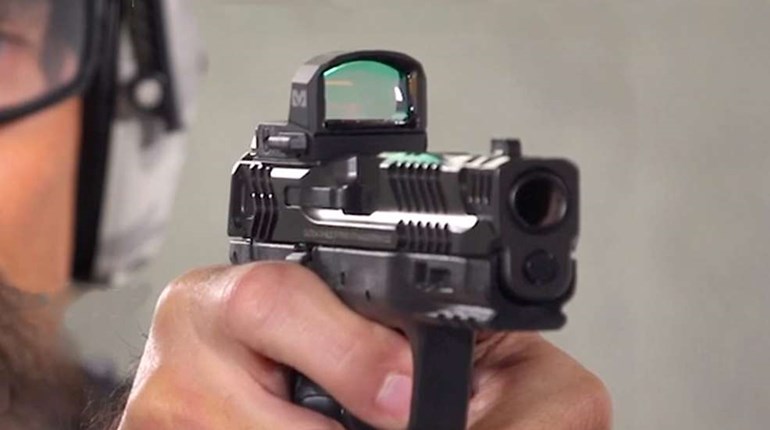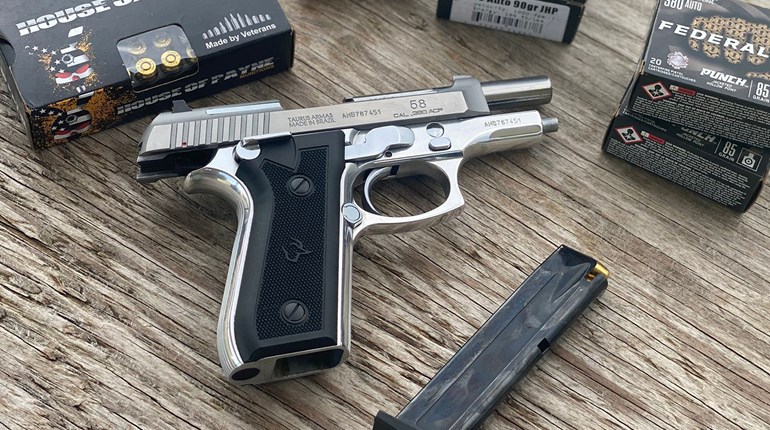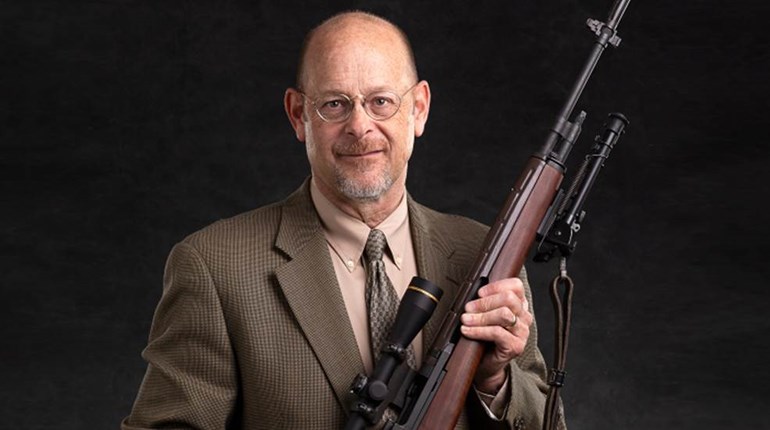
Readers of “Exercise Your Freedom,” and certainly of American Warrior, aren’t likely to be strangers to our “guest” this week—Defense Training International’s founder and president John Farnam. At present, John is abetting us in one of our favorite learning/training/skills development practices; stealing from his nearly half-century of experience as a USMC officer, law enforcement professional and pre-eminent firearms instructor. Generally, we must satisfy ourselves with mere appropriations from and mumbled attributions to his published works (here, here and here, for instance), so precisely why he’s actively aiding this process, we’re unsure. We therefore proceed before he recovers himself.
A1F Daily: John, thanks as always for sharing your time and expertise. As we understand it, our exercise today is from your ARTA curriculum, correct? Any background there that we ought to understand?
John S. Farnam: That’s correct. ARTA is DTI’s Armed Response to a Terrorist Attack curriculum. It was designed in response to the ugly reality that active shooter acts of terrorism are a fact of life. It’s heartening to see organizations waking up to this, albeit slowly, and getting their people trained to address these kind of threats. Naturally, individuals benefit, too, in terms of protecting themselves and their families.“It was designed in response to the ugly reality that active shooter acts of terrorism are a fact of life.”
A1F: And it’s a mixed rifle and pistol drill?
JSF: Yes. Pistol skills are indispensable for these circumstances, but they don’t compare—as a decisive fight-stopper—to a rifle or pistol-caliber carbine. Still, our feedback is that even experienced students (up to and including operators) are finding both skillsets and mindsets enhanced. That’s always gratifying, but more important is how it’s increasing the likelihood of surviving, or ending, one of these incidents.
A1F: It also sounds like this is fairly sophisticated in terms of skill level?
JSF: Well, definitely not a beginner’s drill, no. But as with most of our training, it breaks down to good components that less-experienced practitioners can use, and should practice. In that way, they can work up to the end-to-end version of the drill over time, and as their range rules and availability permit.
A1F: So kit is obviously a rifle/carbine and pistol, but what else?
JSF: Rifle is on a good sling, of course, with at least two magazines. Pistol is on whatever constitutes the most likely carry mode. For law enforcement or military, this is pretty well set by department or issue standards, but may vary more if you’re, say, part of your church’s security team.
A1F: Do we detect a hint of a pet peeve there?
“… which is why it’s nonsensical to think anyone who isn’t there will have time to get there and save you.”JSF: <<Laughing>> OK, you caught me. This is a good drill to wring out problems in that gear, to say nothing of your rifle and pistol. Response time is always extremely compressed in these situations—which is why it’s nonsensical to think anyone who isn’t there will have time to get there and save you. You can’t be wasting your small window of reaction time on equipment problems. As you’ll see, we embed some of this in the drill, too, because it still can happen, even with very expert preparation.
A1F: I take it the ground rules are set, then?
JSF: As much as we really want to, yes. Our instructions are generally sparse as long as there aren’t safety issues to work around: We set the problem up, and let the student solve it. George Patton got this one right long ago: “Never tell people how to do things. Tell them what to do and they will surprise you with their ingenuity.” We also learn other stuff this way: Small technique things—both good and problematic—appear and can be dealt with at the individual level. Even better is that occasional “Eureka!” moment. We can advance the state of the art when that happens.
Our start position is rifle slung and loaded with one round. Pistol is loaded and holstered. Three targets are visible, one quite close, and two more at intermediate ranges, though one should be at least 20 yards out.
The first engagement is on the close target, with the rifle, which immediately goes empty. The next two targets are engaged with the pistol, and with at least two rounds each. Nothing magic about that number, but we want the hits to be of “stop” quality.
The pistol is then re-holstered, and the rifle reloaded while moving to a second set of targets (ideally, these are obscured from the first shooting position). The last bad guys are engaged with the reloaded rifle, and one should have a hostage—likely since he’s now on his own—and he gets two on the nose with the rifle.“We can’t avoid all the dangerous situations the foolish may put us in, but we can embarrass them with the outcomes we affect.”
Not simple, as students quickly see, but straightforward.
A1F: There’s a lot there!
JSF: Thanks, but yes, by design. Going dry after the first rifle shot forces a change to handgun, and rapid re-engagement. It also forces precision with the pistol. The 20-yard engagement takes discipline.
The operator is also compelled to keep track of the status of his or her rifle—that is “down”—during the interruption of the to-pistol transition and engagement of targets two and three. Early on, the number of “Oh, sh#ts” at this point can be entertaining, followed by a scramble for that loaded rifle magazine. It’s also interesting to see the thought process if the rifle isn’t really available by the time the fourth and fifth targets appear. Finish prepping the rifle, or go back to that charged pistol? That’s real world: Solve the problem, get back in the fight.
The last pair of engagements may seem easy, but rarely play out that way. You’ve run to the shoot position presumably, so there are some exertion effects acting on you—at least slightly elevated respiration and heart rate. You’ve re-holstered the pistol on the move, which can engender a surprising number of drops, by the way, and re-loaded, re-gripped and charged the rifle.
Assuming this all goes well, you’ve still got another precision shot to make around the hostage: With either rifle or pistol, things can go awry. Pistol tends to exaggerate the exertion effects, while rifle has a parallax issue relative to the sights: At close ranges, the bullet strike is noticeably below the aim point, and dangerous for the hostage unless the shooter is on with both technique and discipline.
A1F: Seems to us that there are a lot of ways to grow this one as well?
JSF: We think so, too. More hostages, for instance, or a doorway to maneuver the rifle or carbine through are obvious variations. You can also complicate the footing that’s available or necessary: The injured or otherwise incapacitated are quite likely on the ground in a real situation, and you may need to move around or through them to respond to a threat. Or add a malfunction—there are lots of choices.
A1F: Another advantage, perhaps? You can run this a bunch: The easy set up and a small stage complexity allow for lots of repetitions and variations.
JSF: Yes. The advantages of more shooting and less talking improve the likelihood of our favorite outcome: We can’t avoid all the dangerous situations the foolish may put us in, but we can embarrass them with the outcomes we affect.
A1F: Pure gold, John. Thanks again.

































